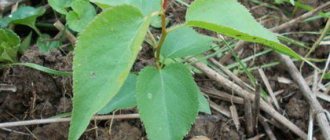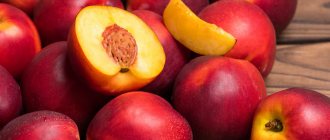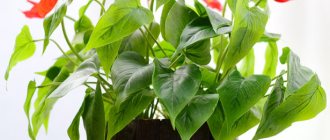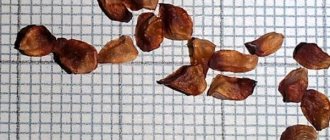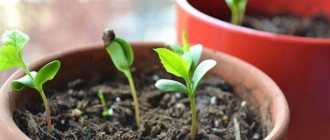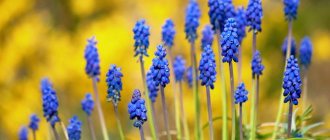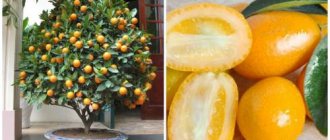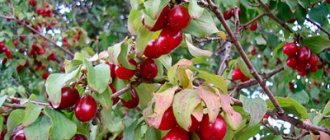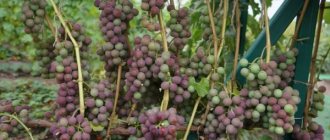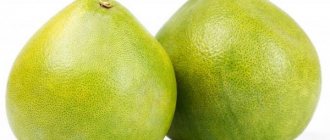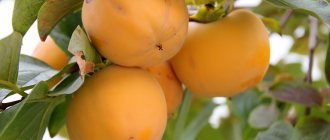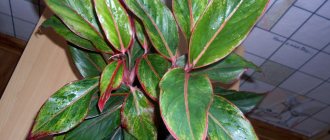From a pear seed you can grow a real tree - the same as from a seedling. True, for this you will have to fulfill difficult conditions of preparation, selection of seeds, and also be patient - a pear from a seed (seed) at home grows much longer than a young seedling.
At home, the tree is usually planted in a specially prepared large pot. The seeds are prepared in advance, washed, and stratified. Subsequently, when the seeds germinate and the first leaves appear, you will need to take care of transplanting the crop into a larger container. Well, if you seriously set out to grow a pear from a seed, this article will be useful to you.
Preparing material at home
Growing a pear from a seed requires quite a lot of time - it will take several months for the seeds to germinate. But one fruit can produce several seedlings at once - this will be the main reward for patience. This material will tell you how to grow grapes from seeds.
Selection of seeds for propagation of seedlings
In late autumn or winter, cut a ripe pear with a sharp knife. Carefully remove the seeds from the fruit and then place them in a small bowl. Add clean hot water (not boiling water) to rinse the planting material thoroughly. Then you will need to determine the germination of the seeds, for which they are germinated in the sand.
The easiest, fastest and most reliable way to check planting material is staining with an indigo carmine solution. During the day, the seeds are soaked in water, then the skin is removed from them with a needle, the seeds are dipped in a solution of indigo carmine (2 g per 1 liter of water is enough). The planting material will need to be kept in the solution for 3 hours, then it is removed and carefully inspected. Viable healthy seeds should not be colored in the solution, but non-viable seeds that have lost their germination will completely or partially change color.
Seeds are harvested strictly from ripe fruits, since only in this case they are formed.
Proper development of the fruit is the key to healthy seeds. Underdevelopment of fruits is usually an indicator of underdevelopment or complete absence of seeds. The best planting material is formed in fruits located on the peripheral part of the crown. This is due to better conditions for fertilization of the ovaries and good lighting of the fruits.
Evaluate not only the degree of ripeness, but also the quality of the pear - if it has spots, damage, or symptoms of disease, the specimen will not be suitable for propagation.
Preparation
Washing must be done, otherwise traces of pulp and juice will remain on the seeds, which, during stratification, will act as a substrate for microorganisms that cause the death of seedlings. When you finish washing, dry the seeds overnight. Carefully inspect the shells - they must be intact, otherwise, during stratification, the planting material will begin to rot. Until stratification, the seeds must be dry. Under natural conditions, seeds do not sprout in the fall, but begin to germinate only after exposure to low temperatures in winter. If seedlings appear in the fall, they will die in winter.
Stratification
When the seeds are dry, rinse them and place them in a damp piece of gauze. When the grain is ripe, you can plant it in a pot. At first, a very small container will do, but later it will need to be replaced with a larger one. For active germination, seeds need air, moisture and low temperature. Remember that correctly performed stratification largely determines the quality of seed germination in the future.
Advice from experienced gardeners
There are many opinions on how to grow a pear from seeds - they relate to every stage, from stratification to placement in a permanent place in the garden. Some gardeners recommend storing seeds in a moist substrate until spring, others in dry sand. Many people prefer to sow seeds directly into the ground in the fall, believing that nature will best take care of selecting the strongest and most hardened samples. To grow a pear in greenhouse conditions in winter, some recommend bringing it to a permanent place or to a “school” in the spring, others - in September, when the seedling gets stronger, and others - a year later, which speeds up the onset of fruiting. All these opinions are based on personal experience, and a novice gardener will have to choose a planting method that will allow him to grow a pear tree from a seed.
Growing a pear from a seed is a long and labor-intensive task with unpredictable results. Experienced gardeners resort to this method to obtain strong frost-resistant rootstocks. Enthusiasts and experimenters strive to grow a dream tree from a pear seed, which will decorate the garden or home interior. To achieve a good result, you need to carefully care for the young tree - protect it from frost and rodents, protect it from parasites, feed it, loosen and weed the ground. Only by taking the necessary measures can you grow a full-fledged healthy tree from a pear seed.
Preparing for planting and propagation
Now let's look at the procedure for preparing seeds for planting:
- Choosing a container for planting - use a ceramic or clay pot 10-12 cm in diameter. It will need to be filled with a layer of drainage, covered with sand on top, and then with a layer of nutritious humus. The optimal depth for burying seeds is 4-5 cm. To plant pear seeds, you can also use biodegradable peat pots placed in plastic trays.
- Selecting soil - pour drainage into the prepared pot, add clean sand on top, and then make a layer of nutritious humus. You can use garden soil or purchased soil for seedlings as soil.
- Choice of fertilizer - when you make a small hole in the ground, add 1 kg of superphosphate into it. Then add 30 g of humus and 1.5 kg of lime, carefully straighten the roots, sprinkle them with earth, compact them well and pour water on them.
You can learn about the features of growing apple trees from seeds at home here.
A plastic tray and peat pot are a good option for growing a pear with its branched root system of seeds.
Features of care
A pear from a seed will bear fruit only with proper care. If you ignore the recommendations, the plant may not even germinate.
Temperature Creation
For cultivation, a temperature of 18-21 degrees is required. Seedlings cannot tolerate frost. Every day you need to open the windows for 6-8 minutes. This will help harden the seedlings.
Growing on a windowsill is not used. Avoid direct exposure to sunlight.
Required humidity
Recommended humidity is not less than 50%. Excessive dampness is also harmful. It is better that the humidity level is 60-70%.
Watering rules
Moistening is carried out as the soil dries. You need to give up the watering can. For irrigation you need to use a spray bottle.
Excessive irrigation reduces the protective function of the planting. There is a risk of disease. The likelihood of premature death of the pear is increased.
Picking
The plant can be replanted when 4 true leaf blades appear. It must be remembered that the cotyledons appear first. Separate containers are prepared for picking. The plant is first thoroughly moistened and removed from the container.
The sprout is carefully transferred to the prepared container and sprinkled with soil on top. The plant is grown at home until it gets stronger. From time to time, the pot can be taken outside to harden and adapt to new conditions.
Planting and growing pears from seeds
Planting and growing cherries from pits, like pears, has certain features. Let's look at them:
- Planting technology - when the seed sprouts, it can be planted in a pot filled with soil, drainage and nutrients. The seed is immersed in humus to a depth of 4-5 cm.
- When the first shoots appear, begin to properly care for the plant. Cold air and dry soil are the main enemies of pears; as a result, the shoots can become infected with scab and sooty fungus. Place the pear on a glazed balcony on the sunny side, while the pot should be in the shade and the air should be warm and humid. You can spray the plants with room water using a spray bottle. In the summer months, the plant is watered twice a week; in winter, 3 times a month is enough. Water generously, but do not overwater the plant. In enclosed spaces, it is advisable to spray the leaves.
- Care - for normal growth, a pear needs moist soil, warm air, and a sufficient amount of sunlight. Read about how to plant seedlings in spring here.
An easier alternative to growing a pear from a seed is to plant a cutting. Buy a dwarf or columnar seedling - these varieties are compact in size and bear fruit well.
Why do pear seeds not germinate after sowing? They cannot sprout from the seed.
Seeds do not germinate due to violation of the order of their preparation, germination or planting. It is best to plant the seed in the spring, after stratification is completed (this period lasts almost 3 months). Accordingly, you will need to buy or prepare seeds no later than the end of February, and sow them in early May or June. This link will tell you what to plant next to the pear.
To determine germination, you can germinate the seeds in sand or, as we wrote above, stain them with an indigo carmine solution. Non-viable seeds that have lost their viability are colored completely or partially (only the embryonic part). Do not take seeds from unripe fruits, as they are not formed and do not have a normal color. Underdevelopment of fruits is also in most cases an indicator of underdevelopment or complete absence of seeds.
The best seeds are formed in fruits that grow on the periphery of the crown - if possible, take this into account. This is due to optimal conditions for fertilization of flowers and their good illumination. You can learn about how pears are pollinated from this article.
The seed type of propagation of pears fully supports the species characteristics.
Washing the seed is also mandatory. If this is not done, juice and pulp will remain on the shell, which can give erroneous test results for germination, or even cause the death of seedlings in the future.
After washing, the seeds are dried for two days and inspected for damage - if the shell is defective, the seeds will begin to rot and, accordingly, will not sprout. Before stratification, the seeds are stored dry. Under natural conditions, fruit seeds do not germinate in the fall - so be patient and wait.
When sowing in spring, the seeds are necessarily stratified. Yes, you can put dry seeds in the ground, but they will sprout no earlier than in a year. That is, stratification is an important component of seed preparation, which is responsible for their normal and fairly rapid germination.
It is also recommended to mix the seeds with loose material before it and moisten it thoroughly. For loose material, use crushed peat or clean river sand at the rate of 3-4 parts per 1 part of seeds. Moistened peat or sand is mixed with the seeds as thoroughly as possible - the seeds should not touch each other too closely, otherwise they will begin to mold, which will affect germination in the future.
Place the mixture in pots, and transfer the pots to a cellar or basement with an air temperature of 0-+5°C. For normal stratification, pear seeds need 40-60 days; do not shorten this period, otherwise you will spoil the seeds. When the number of sprouted seeds reaches 1%, you will need to transfer them to ice or bury them in the snow and store them until spring sowing.
Stratification can be replaced by sowing dry planting material directly into garden beds. The planting depth should be 2-4 cm, the distance between the seeds 10 cm. Planting too often, again, can lead to failure of germination.
To improve germination, use cubes, pots or blocks with peat and humus for planting. Good nutritious soils provide seeds with the microelements they need to grow.
What fruit trees can be grown from seeds. How to grow a tree from a seed?
Almost any tree can be grown from a seed. In fact, this process will not be difficult, but there is one condition - you need to be patient. It takes a lot of time for a small seed to grow into a big tree, because it takes more than one year.
What you need to grow a tree from a seed
There are some rules on how to grow a tree from a seed. They are applicable for growing all trees: garden and wild. You can sow both in the spring in April - May, and in the winter - in October - November.
How to plant a seed tree in spring
- Hard pits, such as cherries, sweet cherries or apricots, should be soaked in water for 1 month. Change the water every day, and in order to prevent the appearance of mold, you need to pre-treat the seeds in a solution with potassium permanganate (25 mg of manganese per 1 liter of water).
- Don't forget that seeds, like many seeds, need stratification. Before planting, they are kept for 2-3 months at a temperature of +15 - 20C. After which, for 2-3 weeks, they are placed in a colder room - in the basement or in the refrigerator. The temperature should not exceed +6C and fall below -2C.
- We put the box in the living room. After most of the sprouts have hatched, you can plant the seeds directly into the ground in your garden plot.
How to plant a tree from a seed in winter
- The bones need to be prepared in the summer. Dry them a little and put them in a box with sawdust or wet sand until October. Make sure that no sprouts appear. If this happens, then place the box in a cool room.
- In October, you can plant the seeds in open ground to a depth of about three centimeters. Watering is not necessary.
It is worth considering that garden trees grown from seeds need grafting. This procedure is necessary so that the tree can fully bear fruit and be more frost-resistant and strong. Trees that have not been grafted most often do not have fruits or they grow small and tasteless. In general, most trees are quite unpretentious and can grow in any soil.
conclusions
- Planting of seed plants and propagation are carried out according to the scheme. You can grow a pear from seeds, the main thing is to act in accordance with the instructions, choose which variety to plant, sow and be patient.
- In the spring, be sure to fertilize, preferably nitrogen. During active flowering, the tree is treated with 2% sulfate.
- Pears have good disease resistance, but preventative treatments are needed in any case. Carry them out using fungicides and folk remedies.
- Be sure to select seeds before germination, since not all seeds are viable.
- There is no point in taking seed material from unripe pears - it simply will not germinate. Germination is increased by nutritious soils.
